@5:08 The video mentions:
"The insertion point should have a low output impedance and high input impedance"
What is the background for this condition?
I realise I completely misunderstood the context of the question, so I've rewritten my answer. My original answer is kept at the end, if anyone wants to see me being dumb, and change their votes.
Given some loop consisting of individual blocks F, G, H etc. with transfer functions of \$F(s)\$, \$G(s)\$ and \$H(s)\$ respectively, the goal is to find the combined transfer function \$F \cdot G \cdot H\$ of the entire loop:

simulate this circuit – Schematic created using CircuitLab
I modelled each block as an input with some impedance \$Z_{IN}\$ to ground, and a voltage source with some output impedance \$Z_{OUT}\$, which responds to the input according to the block's transfer function.
The principle is to inject at any point in the loop, at say P, Q or R, a small AC voltage offset, that the loop can respond to. If I insert a resistance \$Z_{AB}\$ between the output of one block and the input of the next, say at point R, I can inject an AC voltage offset \$v_{AB}\$ by modulating a small AC current through it:

We have two potentials \$v_A\$ and \$v_B\$ at each end of \$Z_{AB}\$, now representing an input \$v_B\$ to the chain of blocks, and an output \$v_A\$. Ideally, the transfer function K(s) of the loop would be:
$$ \begin{aligned} K(s) &= \frac{v_A(s)}{v_B(s)} \\ \\ &= H(s) \cdot F(s) \cdot G(s) \\ \\ &= F(s) \cdot G(s) \cdot H(s) \\ \\ \end{aligned} $$
However, this result depends on the accuracy of \$v_A\$ and \$v_B\$, which depends entirely on \$Z_{OUT}\$ and \$Z_{IN}\$, which we can see with a little algebra. To find what \$\frac{v_A}{v_B}\$ actually represents, first find current \$I\$:
$$ \begin{aligned} I &= \frac{v_G - v_{AB}}{Z_{OUT}+Z_{IN}} \\ \\ &= \frac{v_G + v_B - v_A}{Z_{OUT}+Z_{IN}} \\ \\ \end{aligned} $$
\$v_G\$ is the unloaded output from the chain of blocks H, F and G, with combined transfer function \$K(s)\$, being fed with input \$v_B\$:
$$ v_G = K \cdot v_B $$
Combining these we get:
$$ \begin{aligned} I &= \frac{K \cdot v_B + v_B - v_A}{Z_{OUT}+Z_{IN}} \\ \\ &= \frac{v_B(K+1) - v_A}{Z_{OUT}+Z_{IN}} \\ \\ \end{aligned} $$
Then find \$v_B\$ as a function of \$I\$, and substitute \$I\$:
$$ \begin{aligned} v_B &= I\cdot Z_{IN} \\ \\ &= \frac{Z_{IN}}{Z_{OUT}+Z_{IN}} \left[v_B(K+1) - v_A\right] \end{aligned} $$
Now we can rearrange to find \$\frac{v_A}{v_B}\$:
$$ \begin{aligned} v_B\frac{Z_{OUT}+Z_{IN}}{Z_{IN}} &= v_B(K+1) - v_A \\ \\ v_B\frac{Z_{OUT}+Z_{IN}}{Z_{IN}} - v_B(K+1)&= - v_A \\ \\ v_B\left(\frac{Z_{OUT}+Z_{IN}}{Z_{IN}} - K - 1 \right) &= - v_A \\ \\ -\frac{v_A}{v_B} &= \left(1 + \frac{Z_{OUT}}{Z_{IN}} \right) - K - 1 \\ \\ \frac{v_A}{v_B} &= K - \frac{Z_{OUT}}{Z_{IN}} \\ \\ \end{aligned} $$
From there we can surmise that if the term \$\frac{Z_{OUT}}{Z_{IN}}\$ is close to zero, it can be neglected. This is the case when \$Z_{OUT} << Z_{IN}\$, and we have:
$$ \frac{v_A}{v_B} = K $$
In other words if \$Z_{OUT}\$ is very low, and \$Z_{IN}\$ is very large, then the ratio of \$v_A\$ and \$v_B\$ is a good representation of the loop's transfer function.
For this technique to accurately determine the loop's transfer function, you must choose an injection point where the preceding stage has very low output impedance, and the following stage has very high input impedance.
Original answer:
If the source injecting the signal has a high output impedance, it will not be able to "inject". Keeping in mind that its purpose is to apply an AC potential difference across a very small test resistance \$R_T\$, it is required to sink and source sufficient current to develop that voltage.
From another perspective, given a source with output resistance \$R_{SRC}\$, and a target test resistance \$R_T\$, they form a potential divider. Some of the source's EMF appears across \$R_T\$, but some also "lost" across its own internal resistance \$R_{SRC}\$. To ensure that almost all of the source EMF appears across \$R_T\$, where you want it, we must ensure that \$R_{SRC} << R_T\$.
At the measurement end, we do not want to draw any more current than we need to, since any perturbation to the system will alter its behaviour. We are measuring voltage at some point, and for the same reason voltmeters are required to have extremely high resistance between their terminals, to minimise any influence they have on the system under test, we must ensure that our measurement system's input have a high impedance too.
Here's a very simple example.
I have set up 2 idealized amplifiers with a loop gain of 5000 (i.e. \$100\times100\times\frac{100k\Omega}{100k\Omega+100k\Omega}\$).

You can see, in the top arrangement, I have placed a voltage source between a high input impedance and a low output impedance node, while in the bottom one, I have placed the voltage source between 2 nodes with the same impedance (i.e. \$100k\Omega\$), namely, the ratio between "input impedance" to "output impedance" is 1.
For the top arrangement (vout_1/vin_1) you can see the loop gain is correctly calculated to be 5000. However, for the bottom arrangement (vout_2/vin_2), the loop gain is twice the designed one, i.e. 10000.
Why is that?
The simple answer is that a voltage source cannot sense impedance ratios, as a current source would. In the bottom arrangement, the voltage will be 1 at vin_2 (a voltage source will provide the necessary current to develop the voltage drop across R4) and will be 10000 at vout_2 (right in the middle of voltage divider).
On the other hand, if we had a current source as shown below:
Then we could sense current division and somehow account for this discrepancy. This was the insight Middlebrook got for his general feedback theorem, as now one is able to account for any sort of impedance ratio within the loop.
In the video you cited above, the injection within the loop is modeled as a voltage source. Hence, you have to take these impedance ratios into account.
"The insertion point should have a low output impedance and high input impedance"
What is the background for this condition?
Your quotation is talking about the insertion point i.e. where you "break the loop" and, that break-in/out point should preferably combine a low-impedance driving source connecting-to a high-impedance input processing section (before the loop is broken).
So, when you "break the loop" (in order to measure loop-gain) there is naturally a low-impedance node for measuring equipment to connect to AND, there is a high impedance input node for injecting an external signal. That then means you can perform accurate loop-gain measurements without being overly concerned about screwing around with impedances.
It's not talking about the external source equipment you use to inject a test-signal when making loop-gain measurements (although their choice is still important). So, my answer to your subsequent question (which I saw first) is the same: -
Theoretically you can break the loop at any point to measure loop gain. However, what you must avoid is breaking the loop at a point that changes the loop gain i.e. if you choose to break the loop at a point of high source impedance loaded by an input of low-ish impedance then, unless you were very careful at recreating those impedance-loading scenarios, when the loop is broken, you will get into trouble for sure.
And, conveniently, the output has a low impedance and the feedback resistors have a much higher impedance hence, that point is naturally suitable for loop-gain measurement.
Maybe you should delete one of those questions because, on the face of it, with hindsight, they are virtually identical.